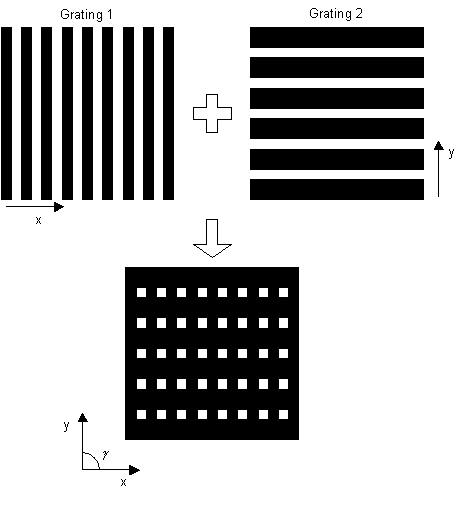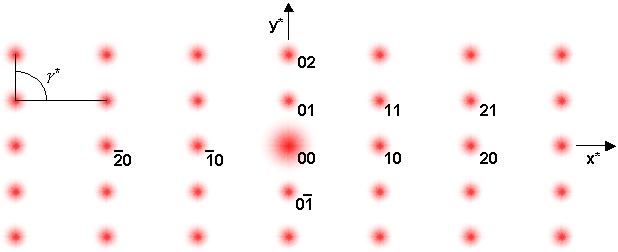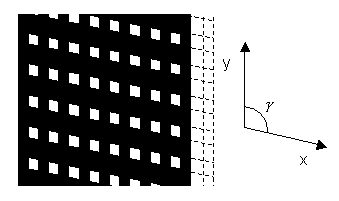Two-dimensional diffraction
The resulting diffraction pattern of a complex mask can be predicted by considering the individual diffraction patterns associated with the components that make up the shape of the mask. This can be seen in the diffraction pattern of a row of apertures.
If two diffraction gratings are superimposed perpendicularly, they form a two-dimensional periodic array of apertures.

The observed diffraction pattern is neither the sum nor the product of the original patterns of the individual gratings, but the separate patterns are repeated to form a two-dimensional array.
Two-dimensional diffraction pattern
This diffraction pattern of a two-dimensional array of apertures is analogous to the reciprocal lattice of the array, and can be labelled (indexed) as such. Inverse axes are therefore created (where x* is perpendicular to y, and y* is perpendicular to x). In a reciprocal lattice, the magnitude of the reciprocal lattice vector is inversely proportional to the magnitude of the original vector. This inverse relationship is evident between the pattern and the mask (the x-axis repeat is smaller than in the y-axis, whereas the x*-axis repeat is larger than in the y*-axis). See the X-ray Diffraction and Reciprocal Space TLPs for an explanation of the reciprocal lattice in terms of diffraction.

The angle γ* in the diffraction pattern is complementary to the angle between the grating axes, γ. i.e. γ + γ* = 180º This can be seen by rotating the gratings with respect to each other.

New mask created by rotating grating 2



